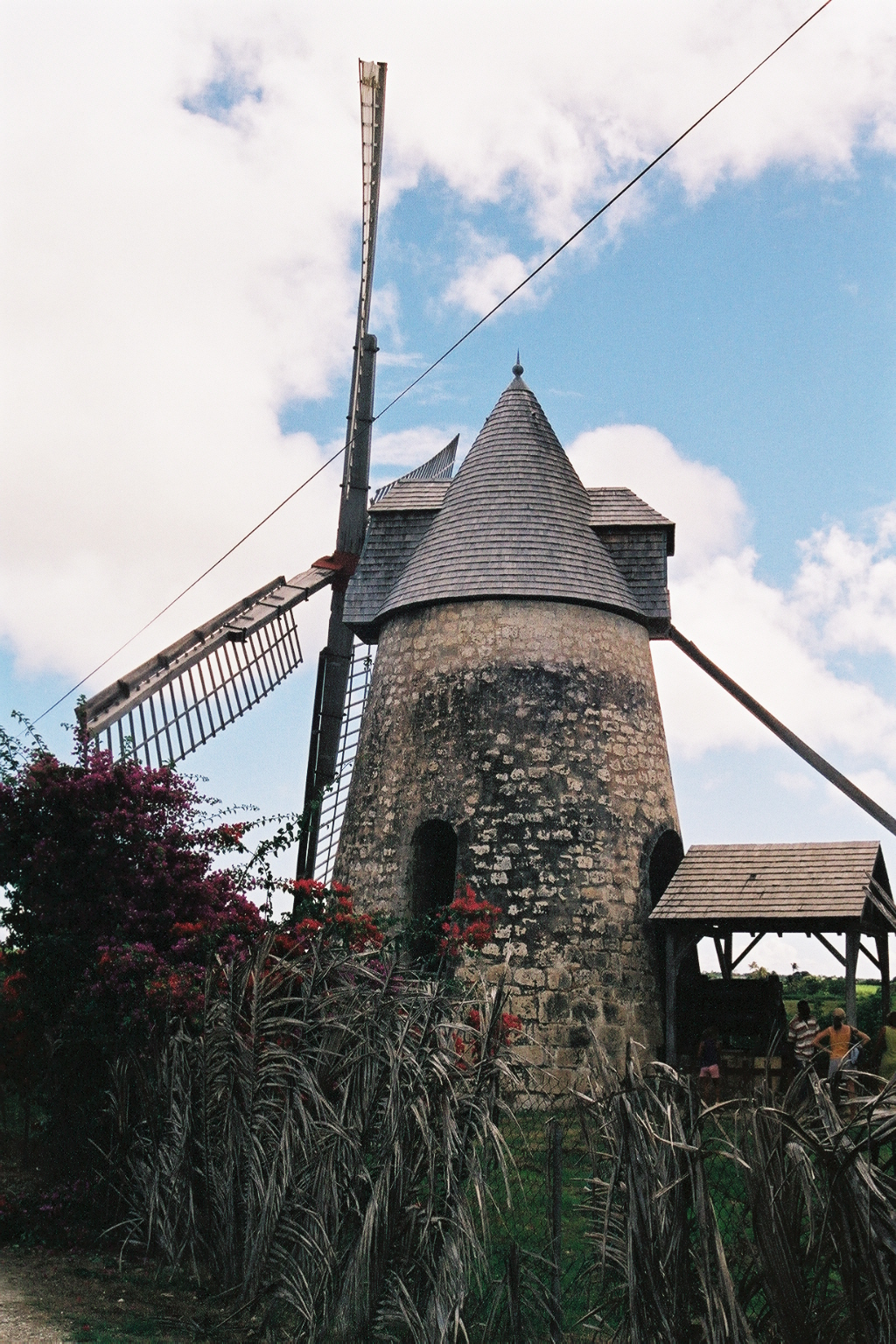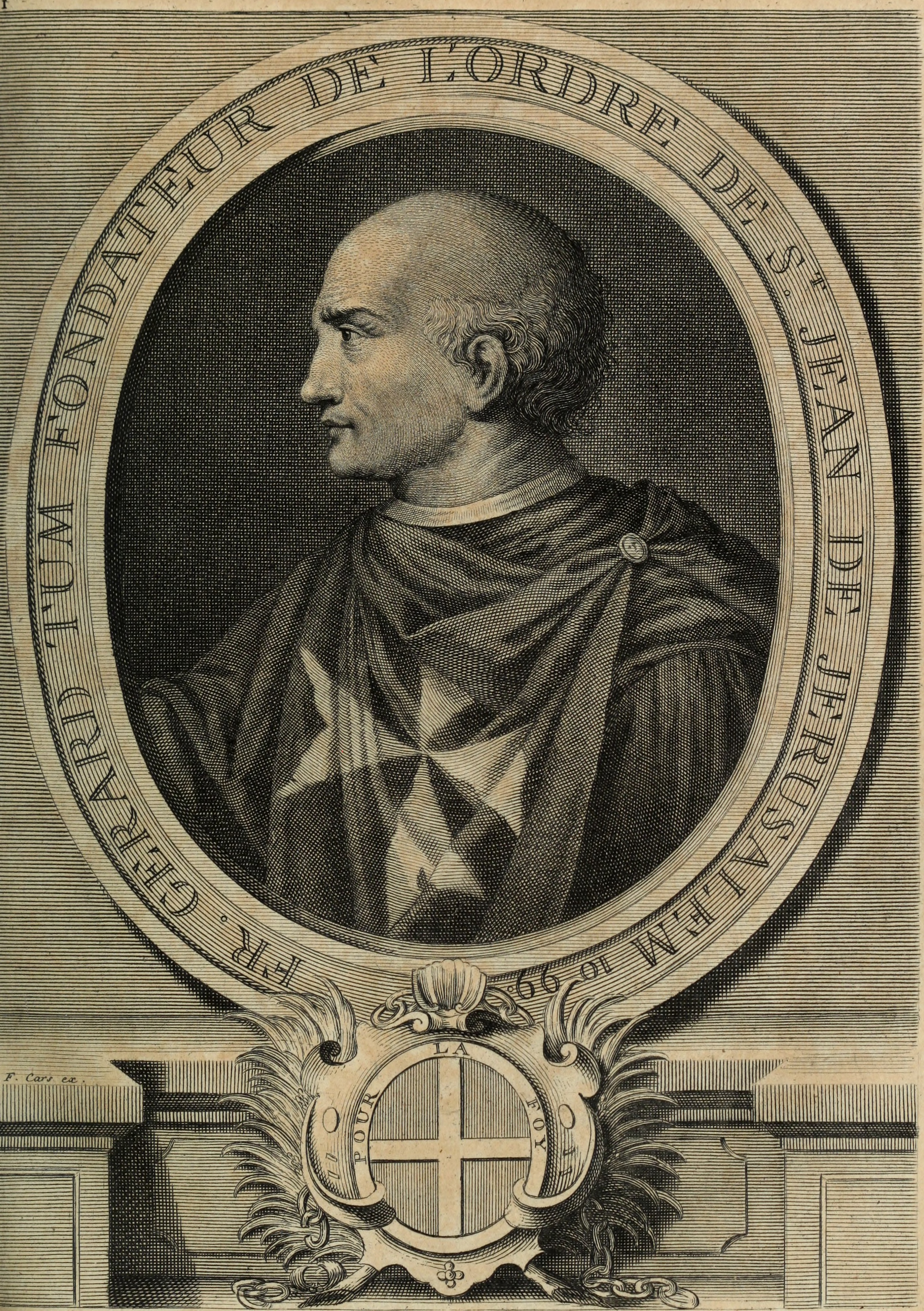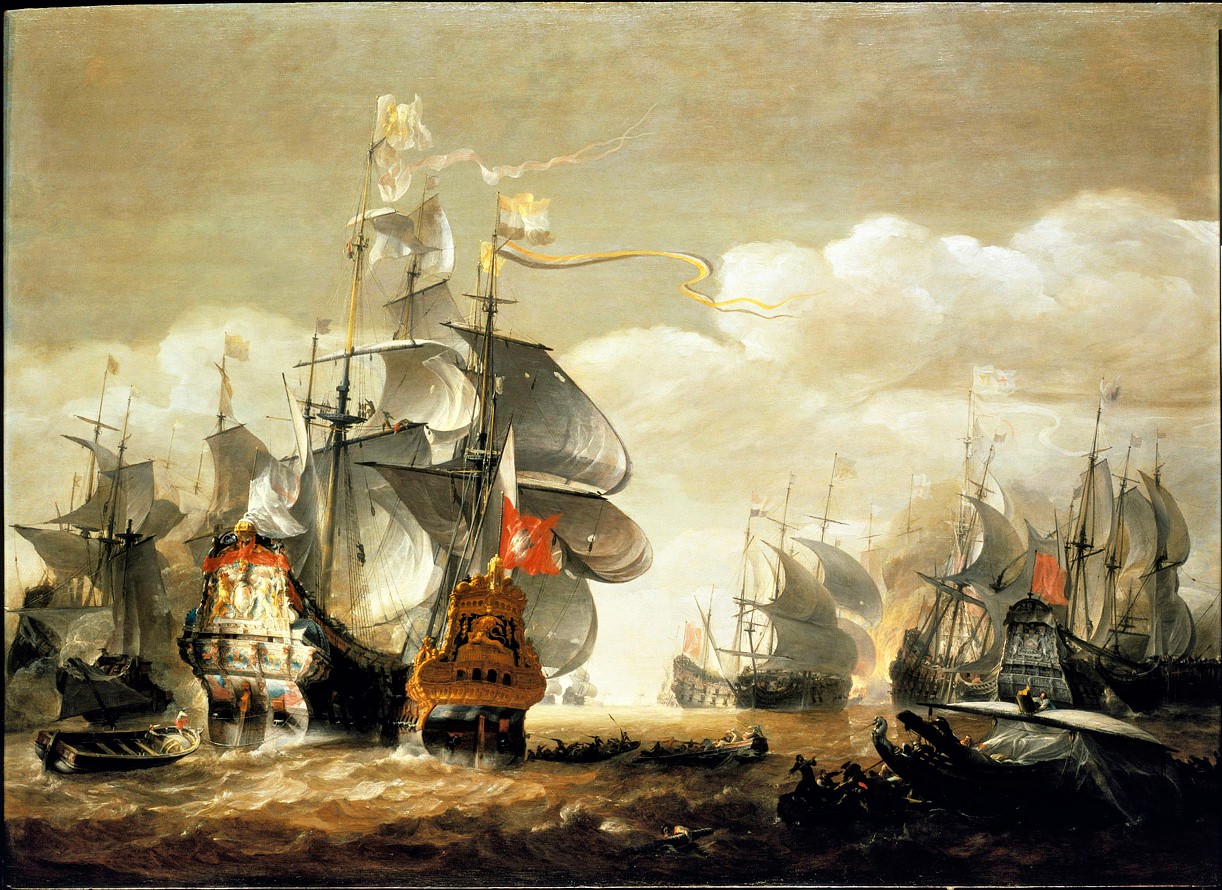|
Cyprien Lefebvre De Lézy
Cyprien Lefebvre de la Barre, chevalier de Lézy (16 December 1643 – March 1687), or Cyprien Lefèvre, Le Febvre, was governor of the French colony of Cayenne (French Guiana) from 1665 to 1667, and again from 1670 to 1679. During his term of office the colony was raided first by the English and then by the Dutch. Family Cyprien Lefebvre was born on 16 December 1643. His father was Antoine Lefebvre (died 1669), sieur de la Barre, a counselor in parliament and provost of the merchants of Paris. His mother was Madeleine Belin. His eldest brother was Antoine Lefèbvre de La Barre (1622–1688), governor of Cayenne from May 1664 to June 1665. In 1665 the French Minister Jean-Baptiste Colbert commissioned Antoine Lefebvre de La Barre as the king's governor of the American Mainland. He was later governor of Cayenne for the king from 1668 to 1670 and governor general of New France from 1682 to 1685. The family dynasty ended with Antoine's son, François Lefebvre de La Barre, who was gove ... [...More Info...] [...Related Items...] OR: [Wikipedia] [Google] [Baidu] |
List Of Colonial And Departmental Heads Of French Guiana
This article lists the colonial and departmental heads of French Guiana, since the establishment of the France, French suzerainty over the territory of French Guiana in 1643, to the present day. The colony was headed by a governor from 1809 until 1946, when the territory became an overseas department of France. (Dates in italics indicate ''de facto'' continuation of office) Ancien Régime First Republic and Empire Bourbon Restoration and July Monarchy Second Republic and Empire Third Republic Fourth and Fifth Republic See also * Politics of French Guiana * History of French Guiana References External links World Statesmen – French Guiana {{DEFAULTSORT:Colonial And Departmental Heads of French Guiana French Guiana-related lists Lists of French colonial governors and administrators, French Guiana Colonial and departmental heads of French Guiana, ... [...More Info...] [...Related Items...] OR: [Wikipedia] [Google] [Baidu] |
Fort Cépérou
Fort Cépérou was a fort that protected the city of Cayenne, French Guiana. It is named after Cépérou, a celebrated indigenous chief who ceded the land. The original wooden fort was built on a hill looking over the mouth of the Cayenne River in 1643. Over the years that followed the French temporarily lost the site to the Dutch, English and Portuguese. The fort was torn down and rebuilt several times. Between 1689 and 1693 the whole town of Cayenne, including the fort, was surrounded by a classic line of fortifications by Vauban. The town was occupied by the Portuguese during the Napoleonic Wars, Napoleonic wars between 1809 and 1817 and Vauban's fortifications were destroyed, as were the Bastion, bastions of the fort. Little remains of the fort today. Location The remains of Fort Cépérou are at the western edge of the present city of Cayenne, French Guiana. A map from 1769 shows the fort and town in the north west of the Island of Cayenne River, Cayenne, which lies on the ... [...More Info...] [...Related Items...] OR: [Wikipedia] [Google] [Baidu] |
1643 Births
Events January–March * January 21 – Abel Tasman sights the island of Tonga. * February 6 **(17 Dhu al-Qadah 1052 AH) In India, the first ceremony at the nearly-complete Taj Mahal in Agra, the Mughal Emperor Shah Jahan observes the 12th anniversary of the death of his wife, Mumtaz Mahal, and opens the structure to thousands of mourners. **Abel Tasman sights the Fiji Islands. * March 13 – First English Civil War: First Battle of Middlewich – Roundheads ( Parliamentarians) rout the Cavaliers (Royalist supporters of King Charles I) at Middlewich in Cheshire. * March 18 – Irish Confederate Wars: Battle of New Ross – English troops defeat those of Confederate Ireland. April–June * April 1 – Åmål, Sweden, is granted its city charter. * April 28 – Francisco de Lucena, former Portuguese Secretary of State, is beheaded after being convicted of treason. * May 14 – Louis XIV succeeds his father Louis XIII as Kin ... [...More Info...] [...Related Items...] OR: [Wikipedia] [Google] [Baidu] |
Jean II D'Estrées
Jean may refer to: People * Jean (female given name) * Jean (male given name) * Jean (surname) Fictional characters * Jean Grey, a Marvel Comics character * Jean Valjean, fictional character in novel ''Les Misérables'' and its adaptations * Jean Pierre Polnareff, a fictional character from ''JoJo's Bizarre Adventure'' * Jean Luc Picard, fictional character from ''Star Trek Next Generation'' Places * Jean, Nevada, United States; a town * Jean, Oregon, United States Entertainment * Jean (dog), a female collie in silent films * "Jean" (song) (1969), by Rod McKuen, also recorded by Oliver * ''Jean Seberg'' (musical), a 1983 musical by Marvin Hamlisch Other uses * JEAN (programming language) * USS ''Jean'' (ID-1308), American cargo ship c. 1918 * Sternwheeler Jean, a 1938 paddleboat of the Willamette River See also *Jehan * * Gene (other) * Jeanne (other) * Jehanne (other) * Jeans (other) * John (other) John is a common ... [...More Info...] [...Related Items...] OR: [Wikipedia] [Google] [Baidu] |
Tobago
Tobago, officially the Ward of Tobago, is an List of islands of Trinidad and Tobago, island and Regions and municipalities of Trinidad and Tobago, ward within the Republic of Trinidad and Tobago. It is located northeast of the larger island of Trinidad and about off the northeastern coast of Venezuela. It lies to the southeast of Grenada and southwest of Barbados. Etymology Tobago was named ''Belaforme'' by Christopher Columbus "because from a distance it seemed beautiful". The Spanish friar Antonio Vázquez de Espinosa wrote that the Kalina people, Kalina (mainland Caribs) called the island ''Urupina'' because of its resemblance to a big snail, while the Island Caribs, Kalinago (Island Caribs) called it ''Aloubaéra'', supposedly because it resembled the ''alloüebéra'', a giant snake which was supposed to live in a cave on the island of Dominica. The earliest known record of the use of the name ''Tabaco'' to refer to the island is a Spanish royal order issued in 1511. ... [...More Info...] [...Related Items...] OR: [Wikipedia] [Google] [Baidu] |
Marie-Galante
Marie-Galante (, or ) is one of the dependencies of Guadeloupe, an overseas department of France. Marie-Galante has a land area of . It had 11,528 inhabitants at the start of 2013, but by the start of 2018 the total was officially estimated to be 10,655, with a population density of . Administration Marie-Galante is divided into three communes (with populations as of 1 January 2013): * Grand-Bourg (5,564 residents), * Capesterre-de-Marie-Galante (3,389) and * Saint-Louis (2,575). These three communes formed an intercommunal entity in 1994: the Community of Communes of Marie-Galante (). This is the oldest intercommunal structure of the overseas regions of France. History The Huecoids are the oldest known civilizations to have occupied Marie-Galante, followed by Arawaks, and then by the Island Caribs circa 850. The island was called ''Aichi'' by the Caribs and ''Touloukaera'' by the Arawaks. Spanish exploration Marie-Galante was the second island encountered by Chr ... [...More Info...] [...Related Items...] OR: [Wikipedia] [Google] [Baidu] |
Jacob Binckes
Jacob Binckes (1637 – 12 December 1677) was a Dutch States Navy officer. Jacob himself used the name Benckes. He was a seafarer trading mostly on Norway in the transport of wood. In 1665 Jacob Binckes started his service with the Admiralty of Amsterdam. His first assignment as a captain was to escort a convoy to Norway. The next year, he helped to secure the River Elbe in northern Germany, near Glückstadt, in the interest of Dutch merchant shipping. As a captain he participated in the Raid on the Medway in the Second Anglo-Dutch War. With his frigate Essen (including 25 marines) Jacob Binckes is part of the taskforce on the Medway. In 1673 together with vice-admiral Cornelis Evertsen de Jongste ("Keesje the Devil") he burned part of the Virginia tobacco fleet in the Second Battle of the James River (1673) before they recapture the former New Netherland capital New Amsterdam, which had been renamed New York after it had surrendered in 1664. In 1674, New York was returned t ... [...More Info...] [...Related Items...] OR: [Wikipedia] [Google] [Baidu] |
Sovereign Military Order Of Malta
The Sovereign Military Order of Malta (SMOM), officially the Sovereign Military Hospitaller Order of Saint John of Jerusalem, of Rhodes and of Malta, and commonly known as the Order of Malta or the Knights of Malta, is a Catholic lay religious order, traditionally of a military, chivalric, and noble nature. Though it possesses no territory, the order is often considered a sovereign entity under international law. The Order traces its institutional continuity with the Knights Hospitaller, a chivalric order that was founded about 1099 by the Blessed Gerard in the Kingdom of Jerusalem. The order is led by an elected prince and grand master. Its motto is ("Defence of the faith and assistance to the poor"). The government of the Sovereign Order of Malta has a similar structure to state governments. However, it also includes specific features associated with its nature as a lay religious order, as well as particular terminology evolved from nine centuries of history. The ... [...More Info...] [...Related Items...] OR: [Wikipedia] [Google] [Baidu] |
John Harman (Admiral)
Admiral Sir John Harman ( – 11 October 1673) was an English officer of the Royal Navy, who served first under the Commonwealth of England, Commonwealth, then Charles II of England, Charles II following the 1660 Stuart Restoration. Harman began his career in 1646, and fought in the First Anglo-Dutch War, as well as a number of other actions. At the start of the Second Anglo-Dutch War, he was captain of ''HMS Gloucester (1660), HMS Gloucester'', the flagship used by James II of England, James, Duke of York at Battle of Lowestoft, Lowestoft in 1665. The English won a clear victory, but Harman was criticised for his alleged failure to pursue the beaten Dutch fleet. Despite this, in 1667 he was given command of a Squadron (naval), squadron sent to re-establish the English position in the Caribbean, a task he successfully carried out. Subsequently acquitted for his actions at Lowestoft, he became Rear Admiral in 1672 and served in all three major actions of the Third Anglo-Dutch War. ... [...More Info...] [...Related Items...] OR: [Wikipedia] [Google] [Baidu] |
Antoine De Noël De La Trompe D'Or
Antoine de Noël de la Trompe d'Or was a French soldier who was acting governor of Cayenne in 1665. Little is otherwise known of his life. Background Antoine Lefèbvre de La Barre left the port of La Rochelle, France, on 26 February 1664 with two warships and 400 soldiers. He arrived in Cayenne on 11 May 1664, and after negotiations the Dutch surrendered on 16 May 1664. De La Barre established a garrison at Fort Cépérou and started construction of a settlement of 200 huts. On 11 July 1664 Jean-Baptiste Colbert, with the king's agreement, founded the Compagnie des Indes occidentales. De La Barre was appointed Lieutenant General of the Company and Governor of Cayenne. His brother, the Chevalier de Lézy, was named lieutenant. Acting governor In February 1665 the ship ''La Suzanne'' arrived in Cayenne with 180 men. De La Barre learned from the ship that Colbert had merged into one all the companies created to exploit the various French possessions in America. De la Barre set off f ... [...More Info...] [...Related Items...] OR: [Wikipedia] [Google] [Baidu] |
Jesuits
The Society of Jesus (; abbreviation: S.J. or SJ), also known as the Jesuit Order or the Jesuits ( ; ), is a religious order (Catholic), religious order of clerics regular of pontifical right for men in the Catholic Church headquartered in Rome. It was founded in 1540 by Ignatius of Loyola and six companions, with the approval of Pope Paul III. The Society of Jesus is the largest religious order in the Catholic Church and has played significant role in education, charity, humanitarian acts and global policies. The Society of Jesus is engaged in evangelization and apostolic ministry in 112 countries. Jesuits work in education, research, and cultural pursuits. They also conduct retreats, minister in hospitals and parishes, sponsor direct social and humanitarian works, and promote Ecumenism, ecumenical dialogue. The Society of Jesus is consecrated under the patron saint, patronage of Madonna della Strada, a title of the Blessed Virgin Mary, and it is led by a Superior General of ... [...More Info...] [...Related Items...] OR: [Wikipedia] [Google] [Baidu] |
French West India Company
The French West India Company () was a trading company of the Kingdom of France founded in May 1664 and eventually closed in late 1674. The brainchild of King Louis XIV's First Minister Jean-Baptiste Colbert, the company was part of an ambitious strategy to compete with the colonial ventures of the Dutch Republic on a global stage, but did not survive the turmoil associated with the Franco-Dutch War in the early 1670s. In Africa, it was succeeded by the Compagnie du Sénégal, and by private traders' operations in America. Inception On the ''Conseil du Roi'' created the West India Company and gave it a monopoly on commercial exchanges between France and "... all lands of our obedience in North and South America and the islands of America" as well as in French trading posts on the coast of Africa from Cape Verde to the Cape of Good Hope. Itw as primarily intended to reclaim the profits and geopolitical advantages of long-distance trade for France, as well as developing the mari ... [...More Info...] [...Related Items...] OR: [Wikipedia] [Google] [Baidu] |




